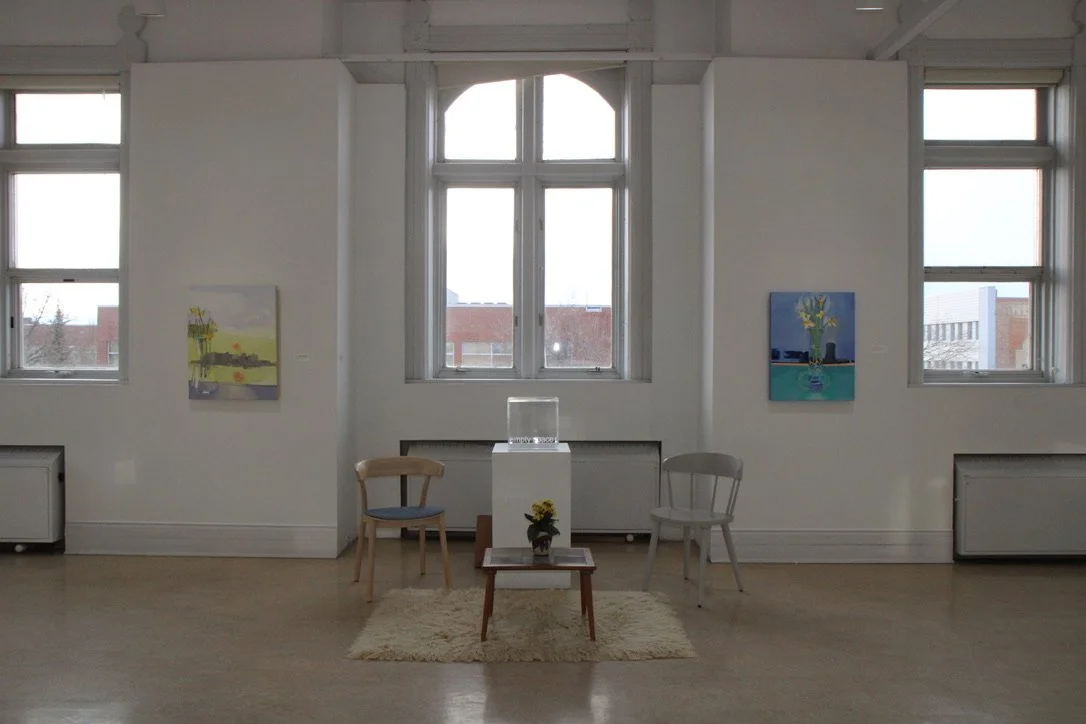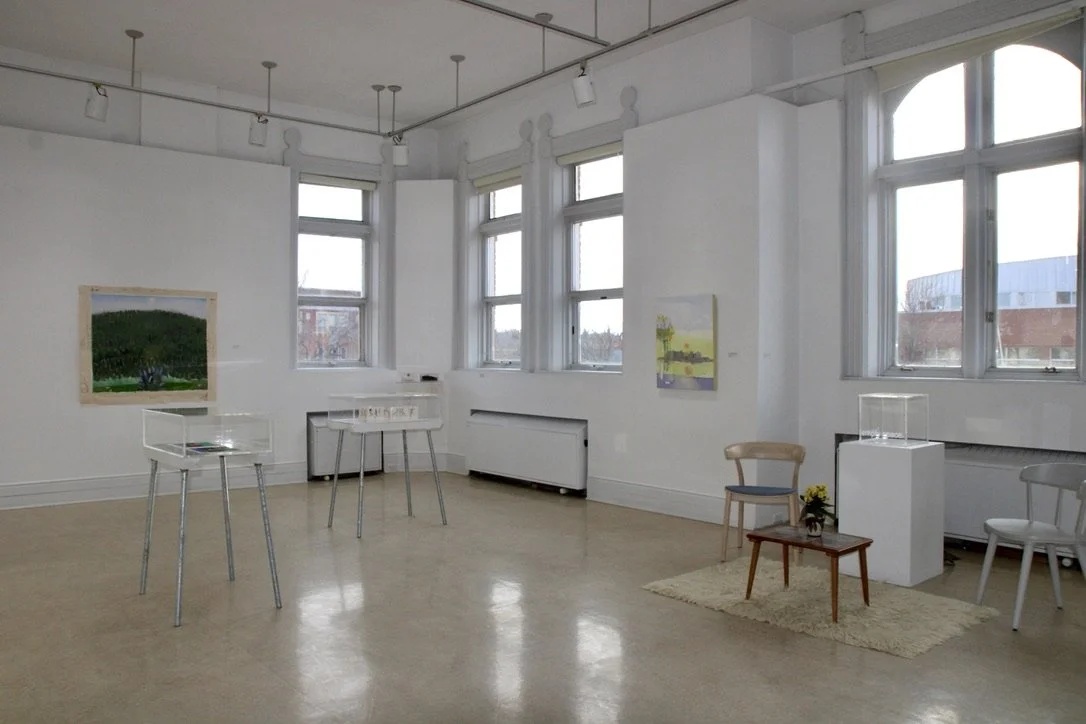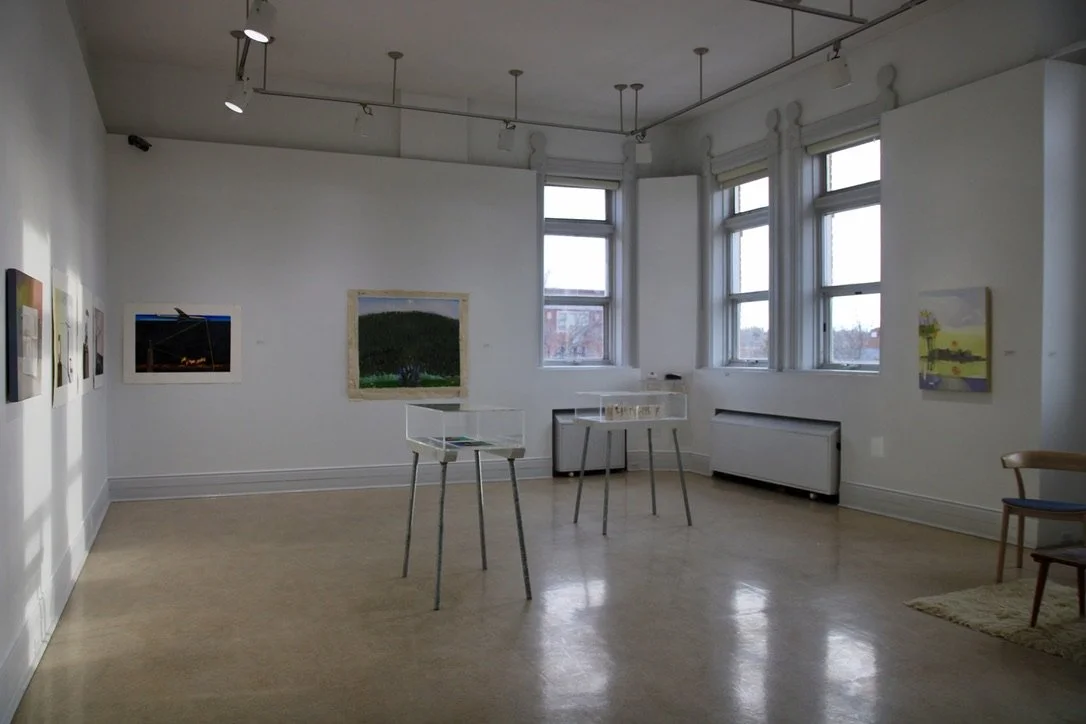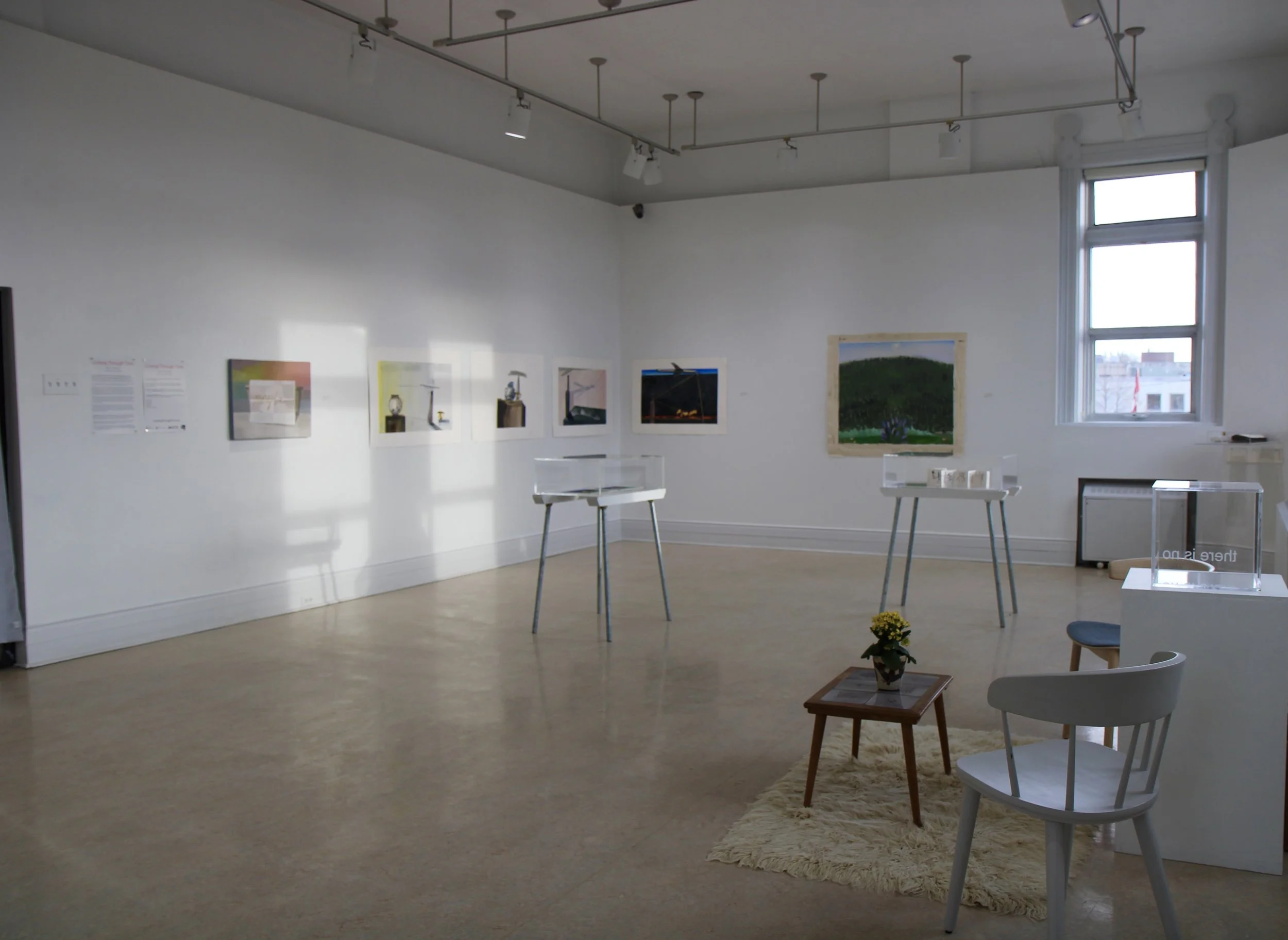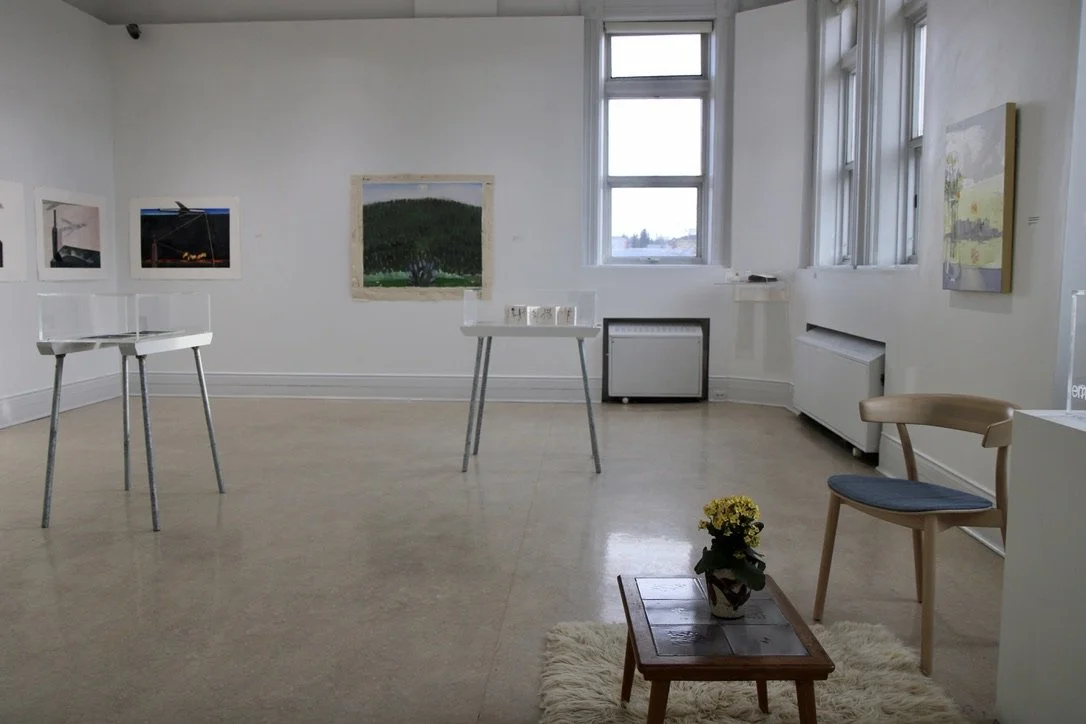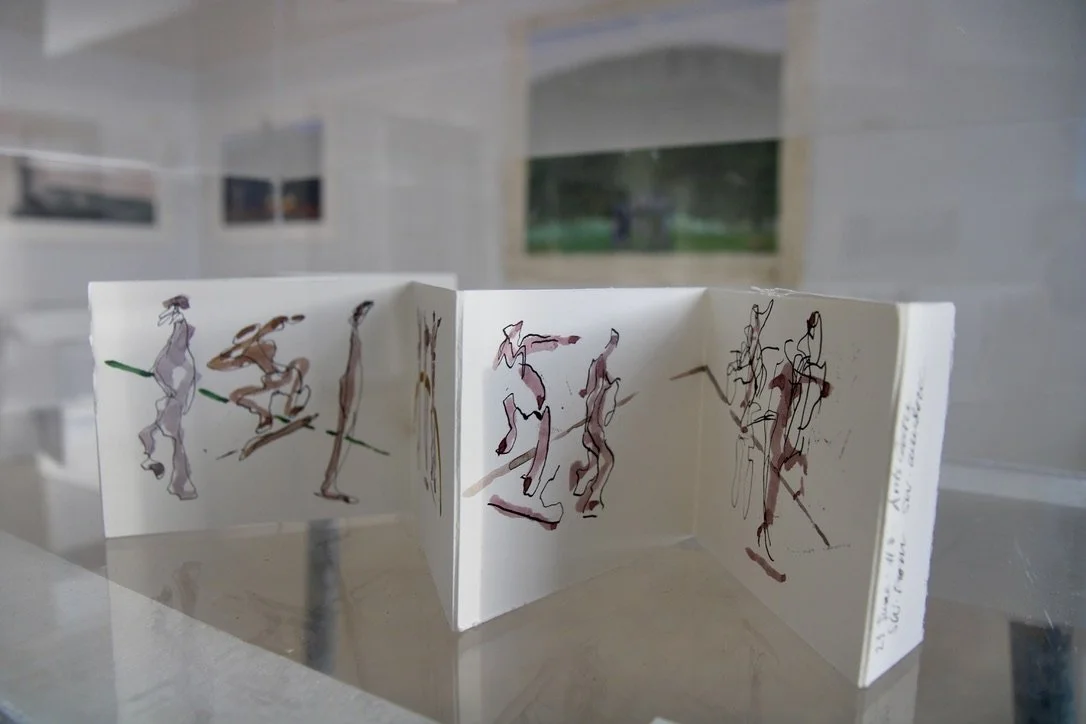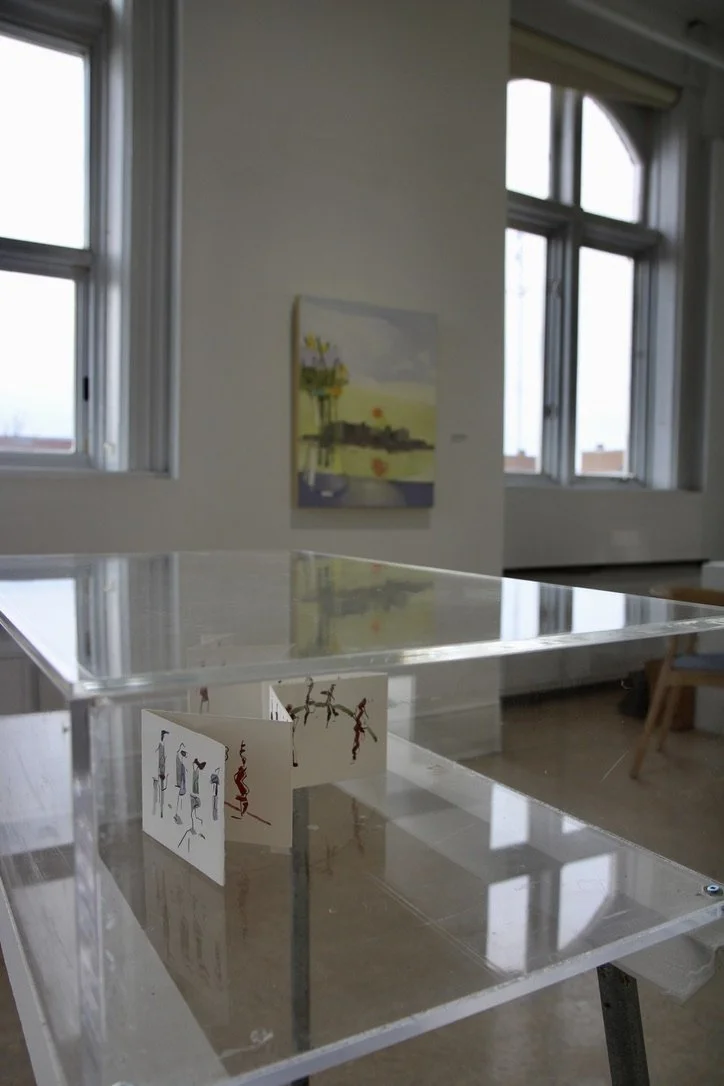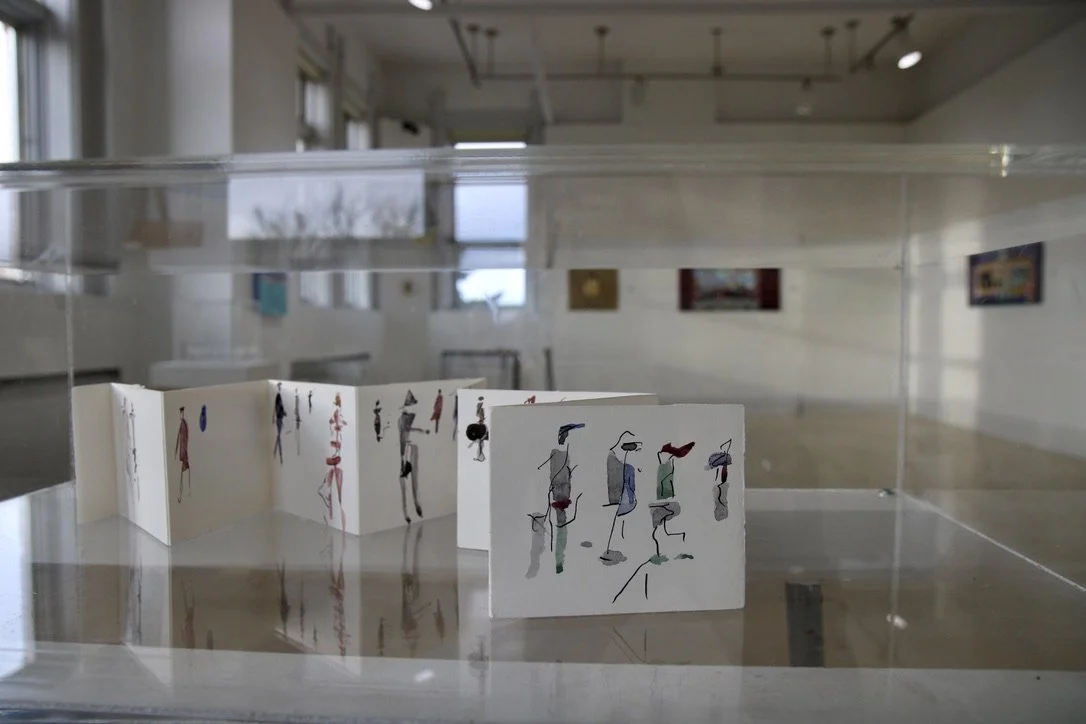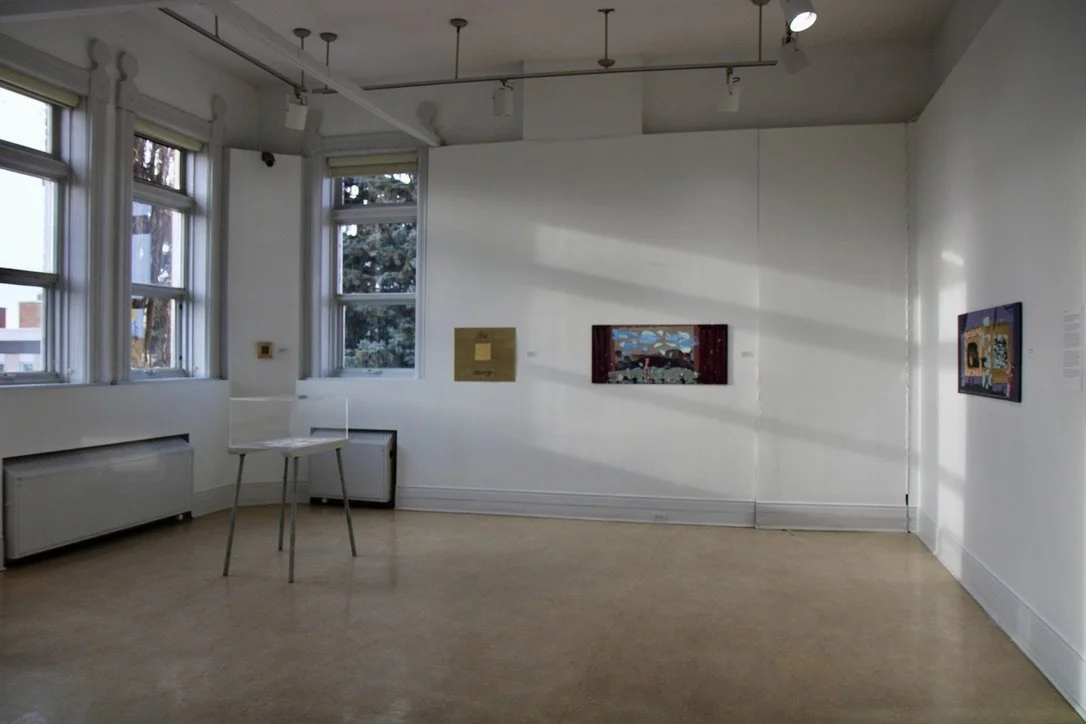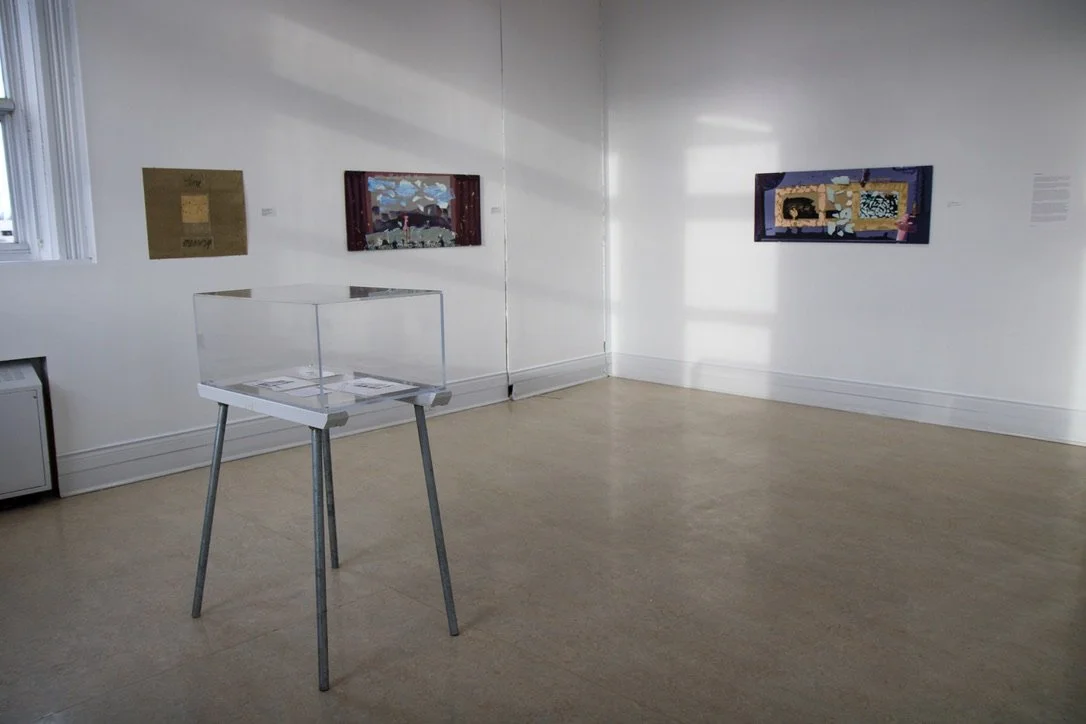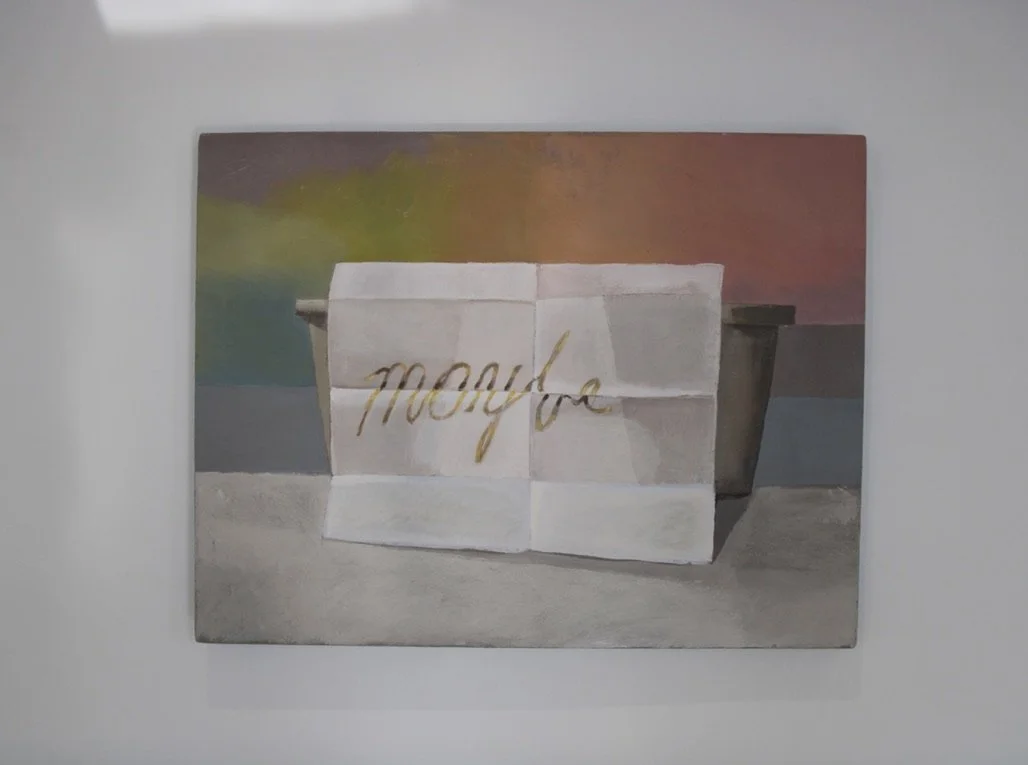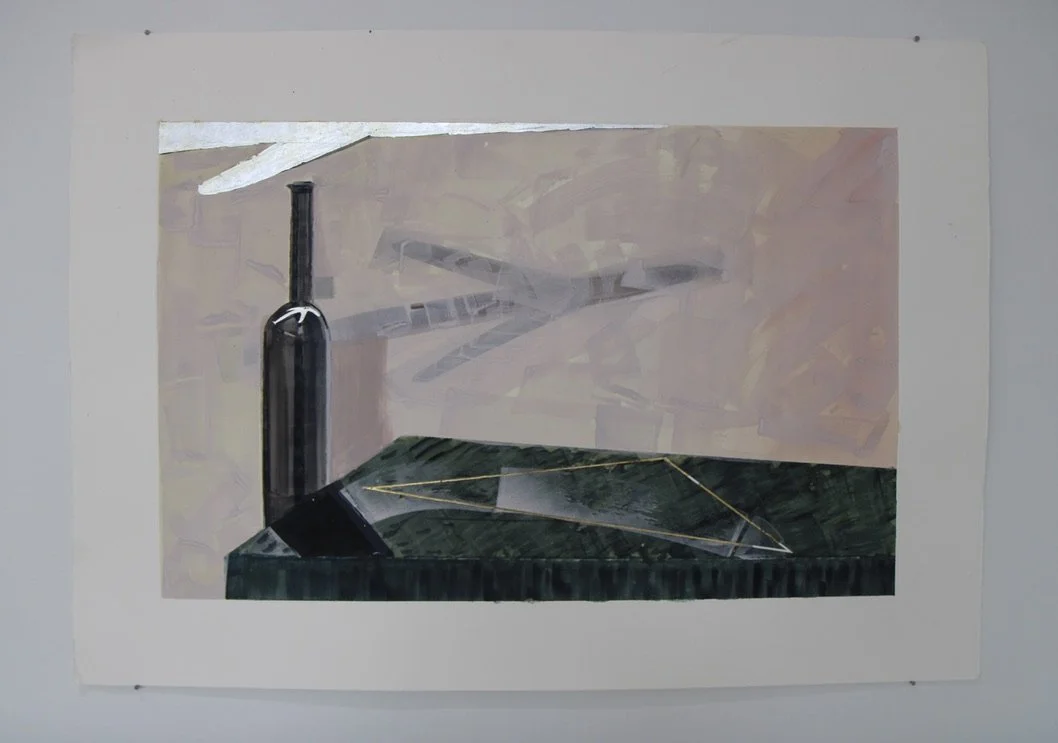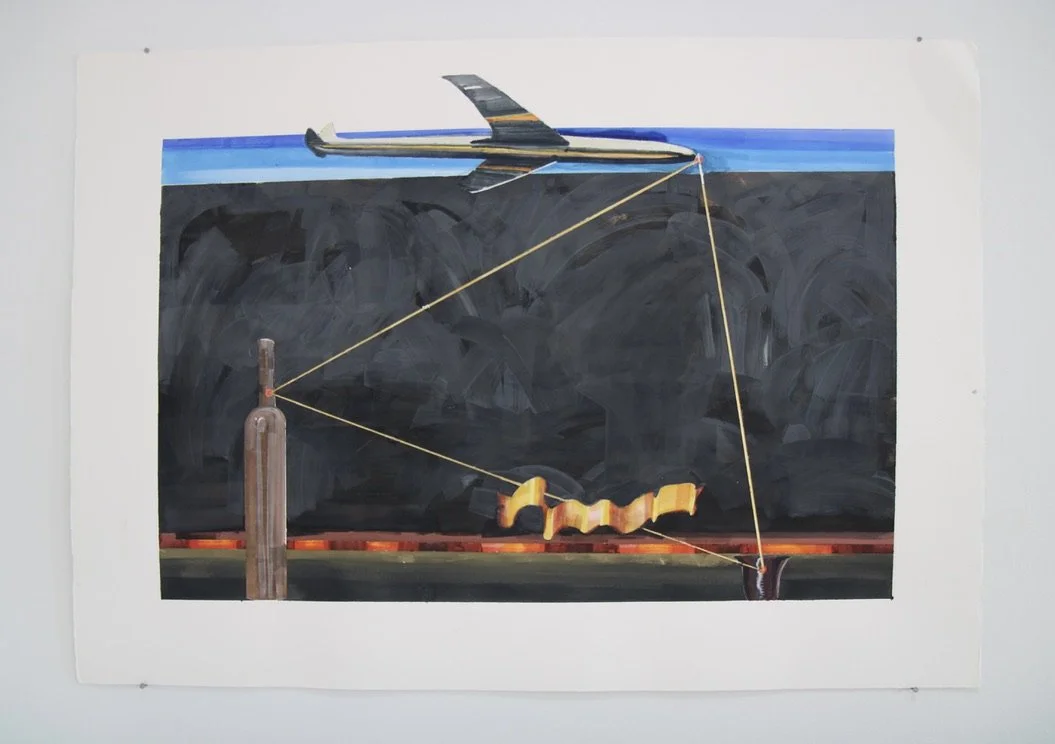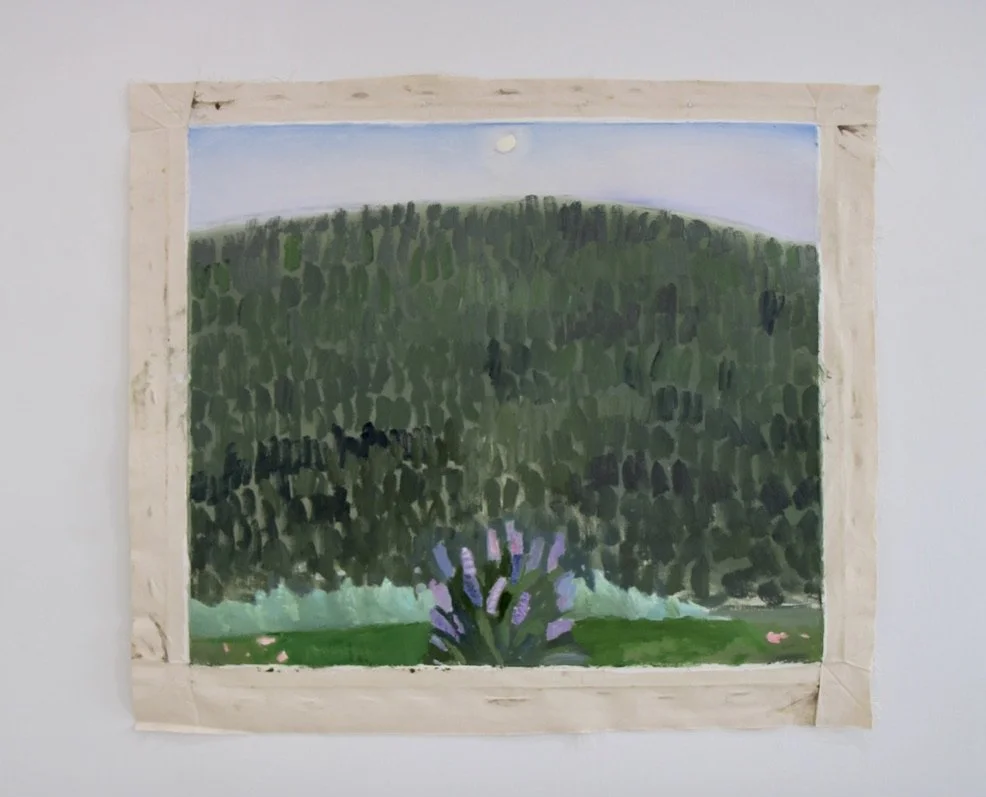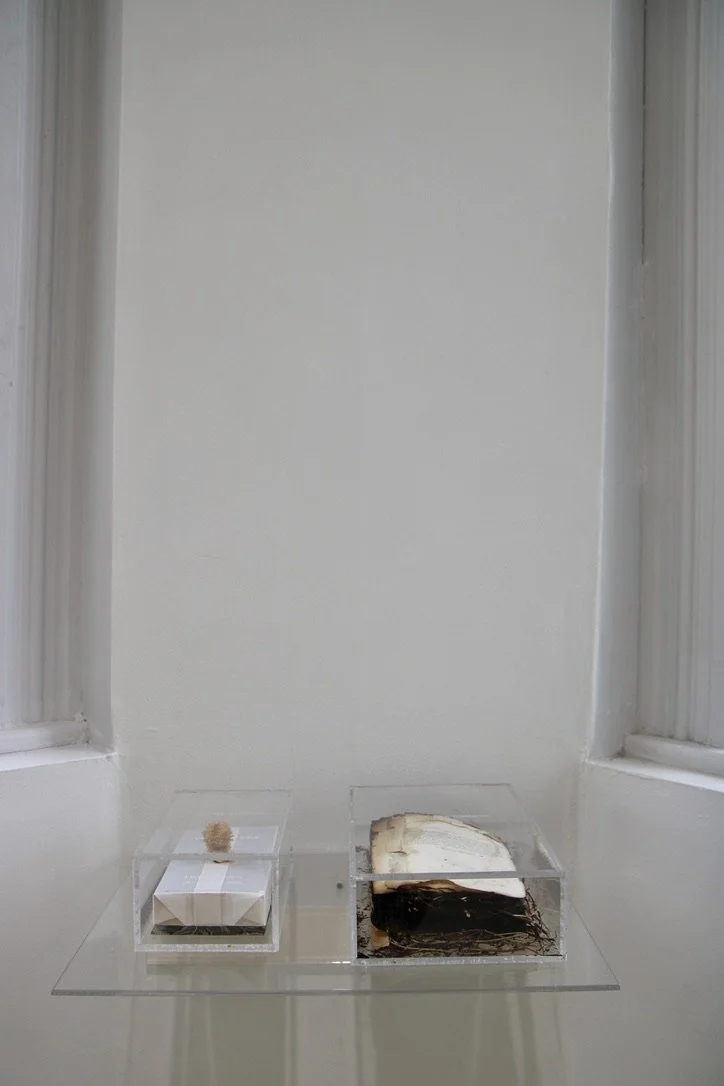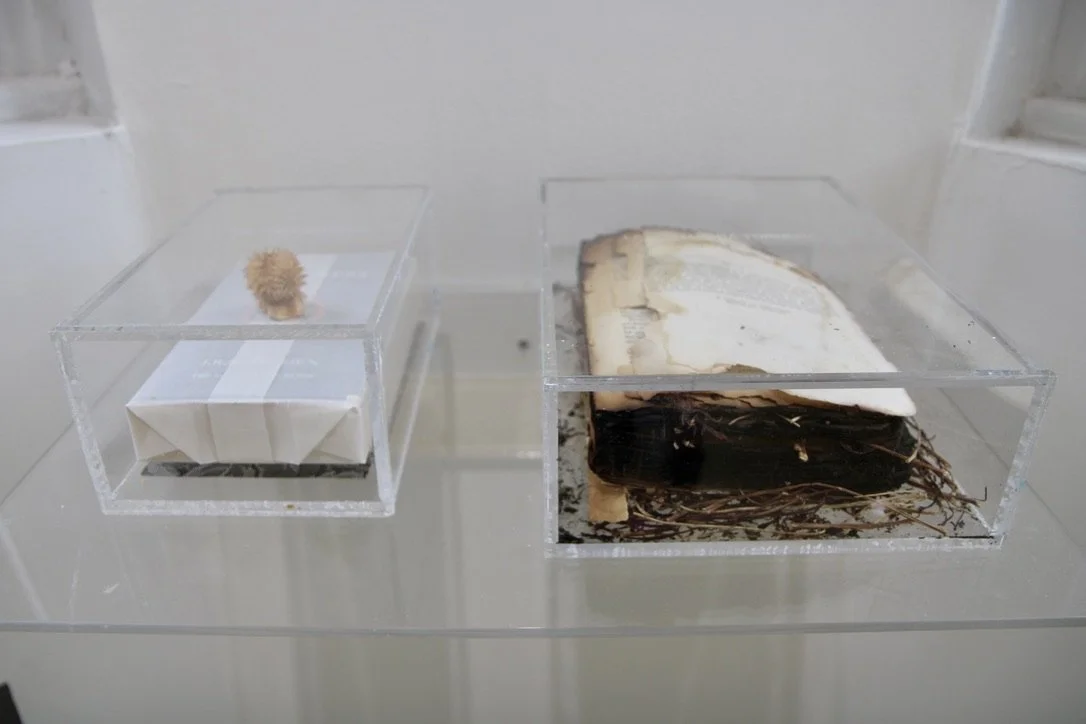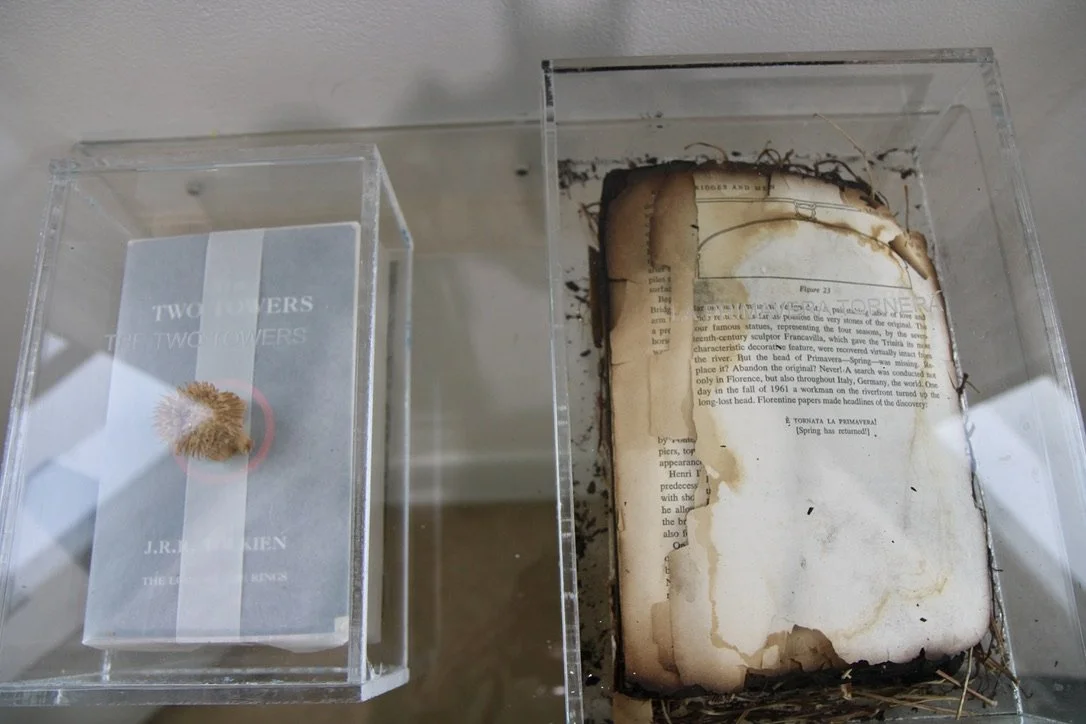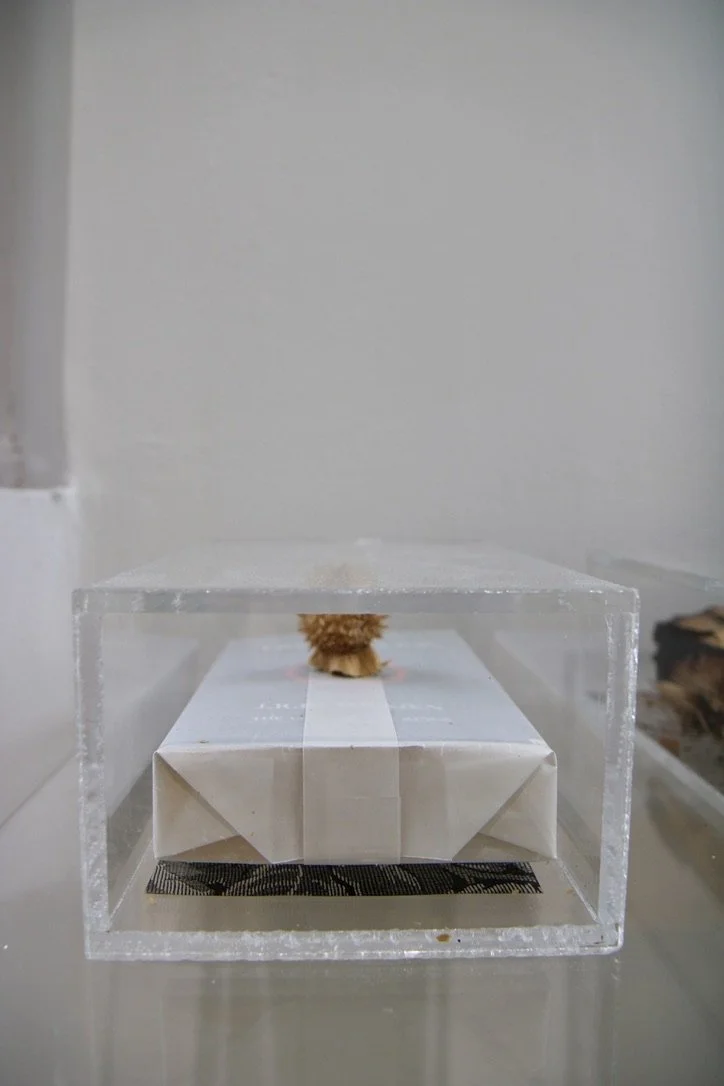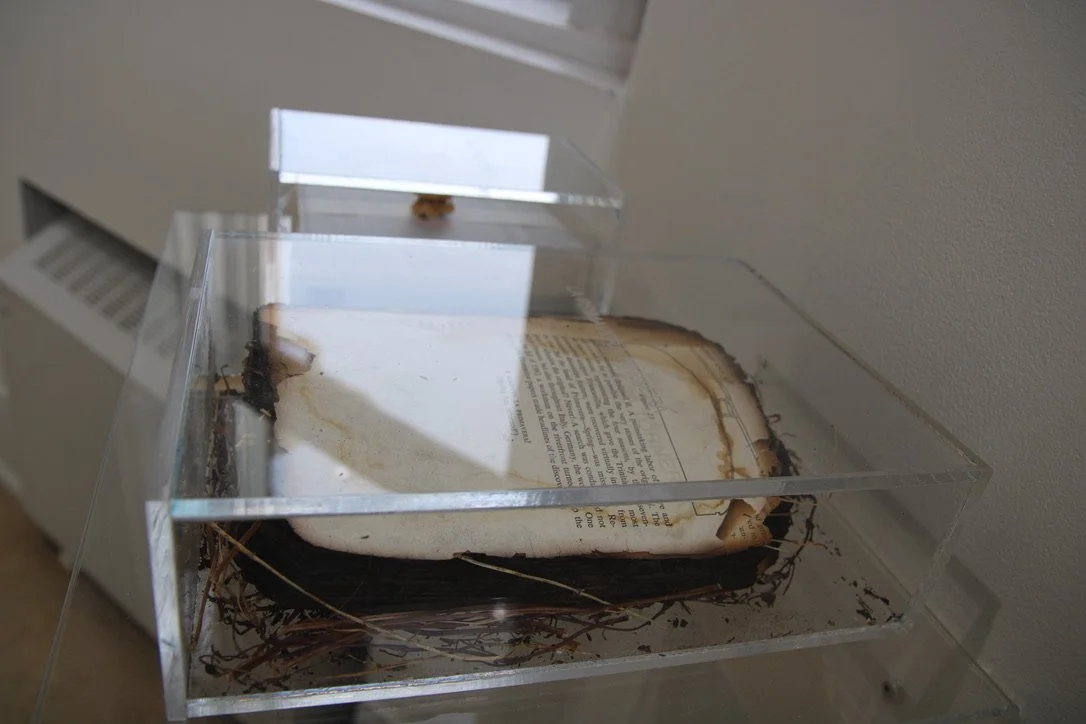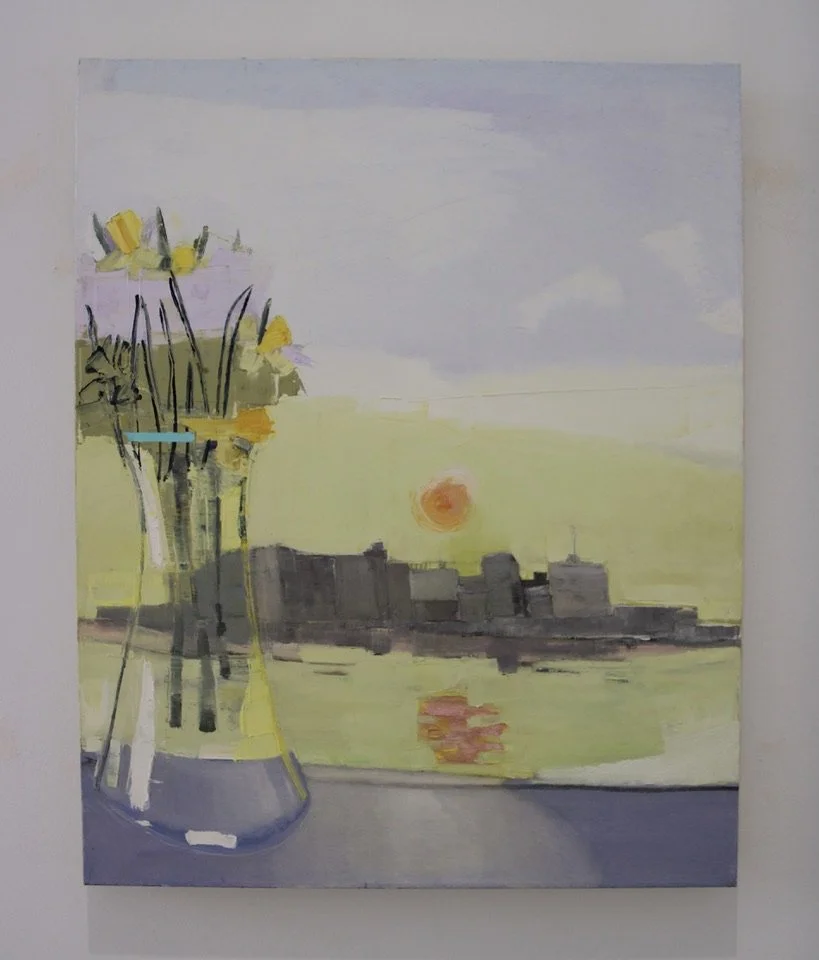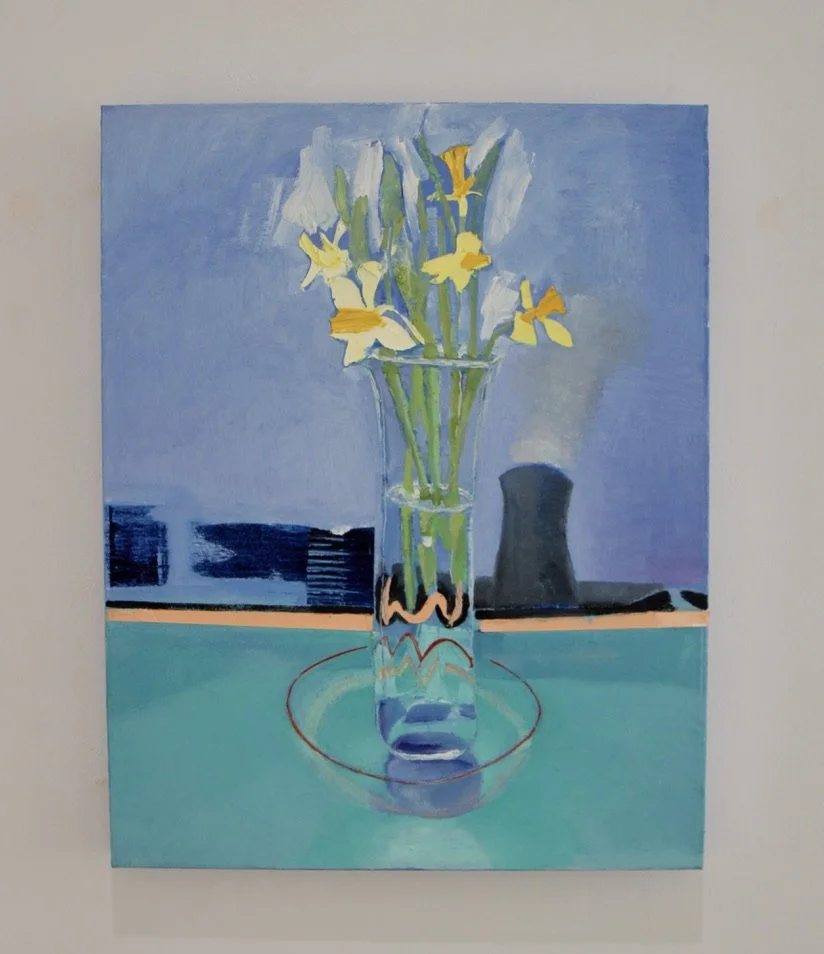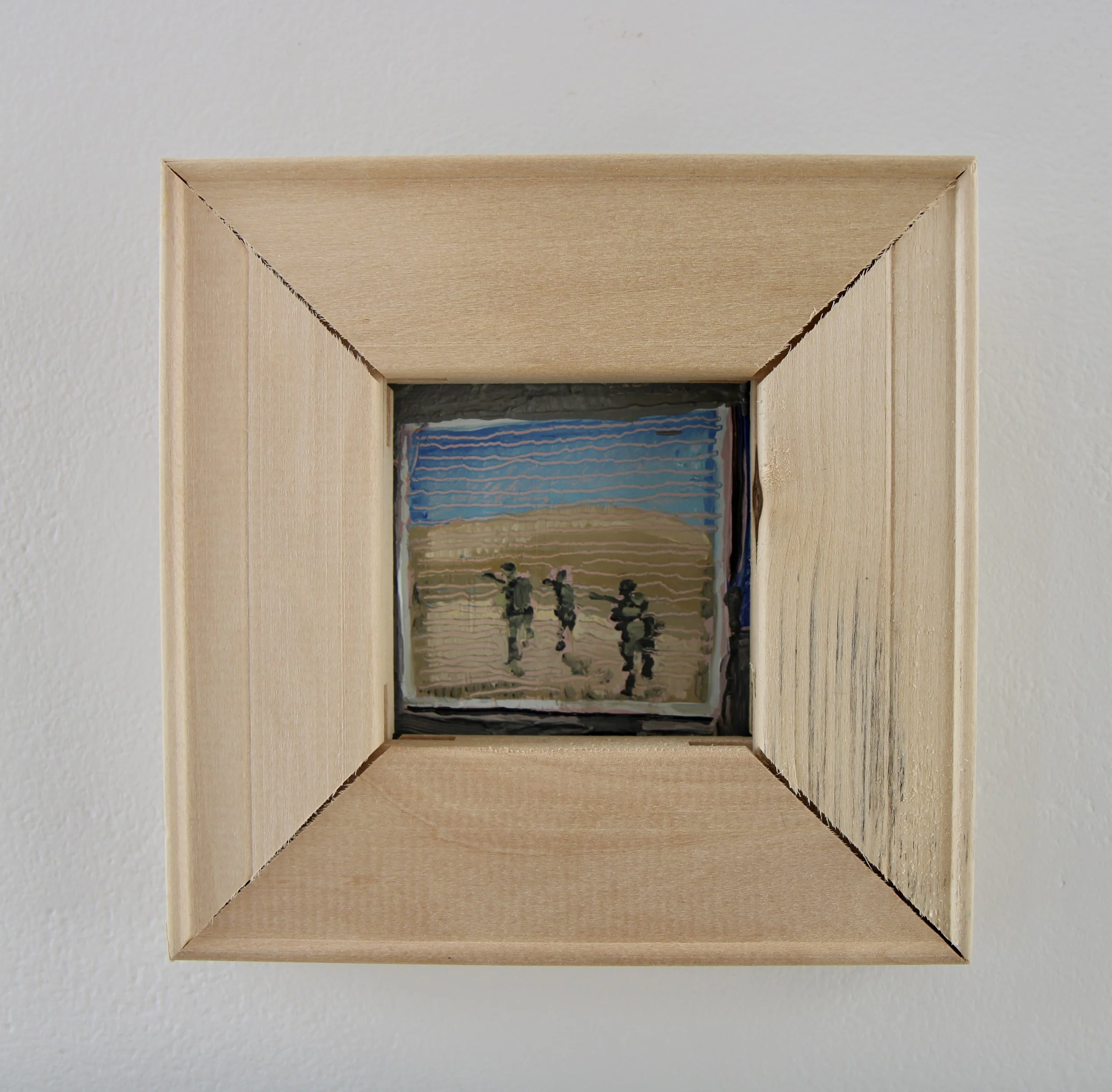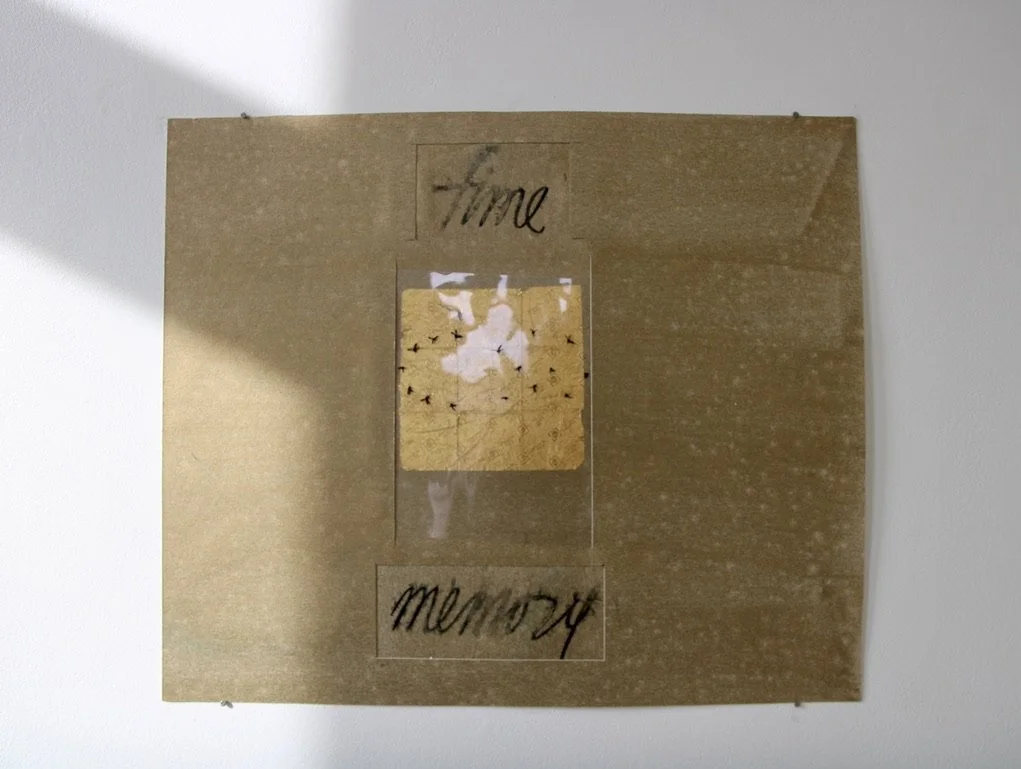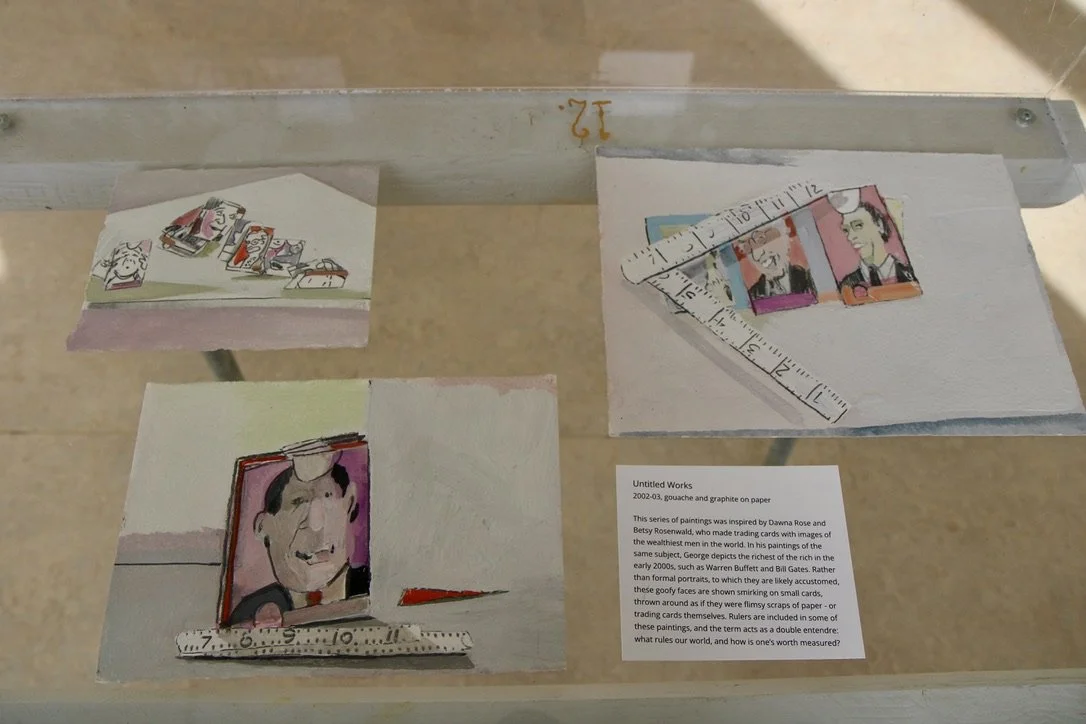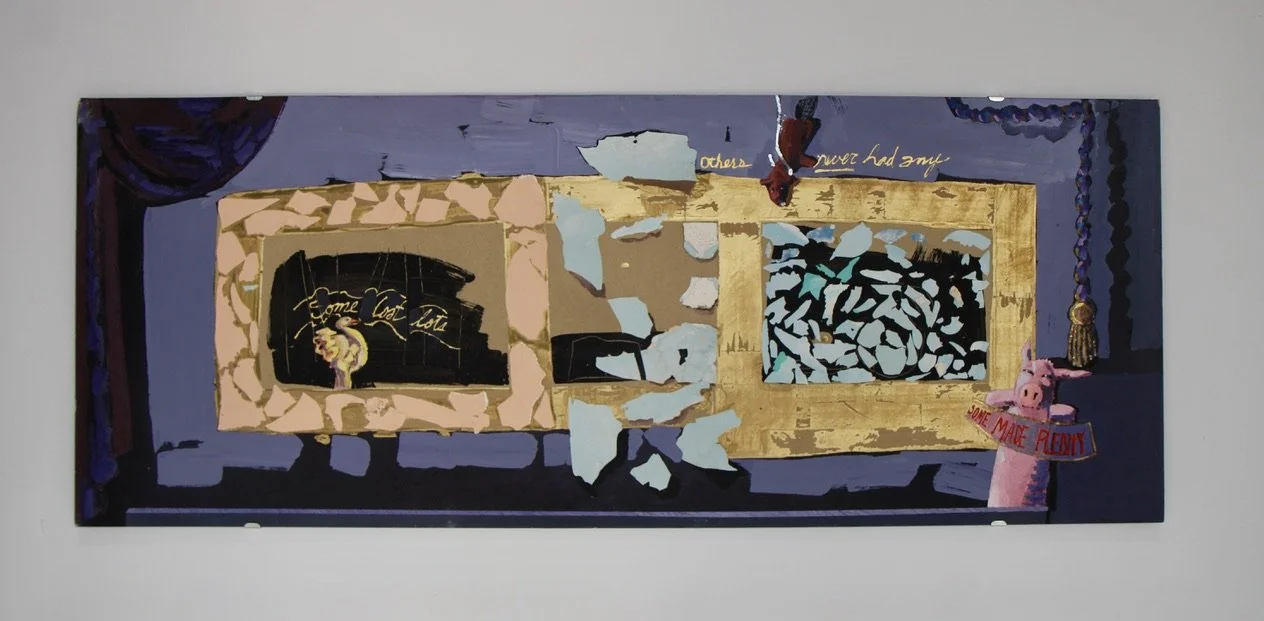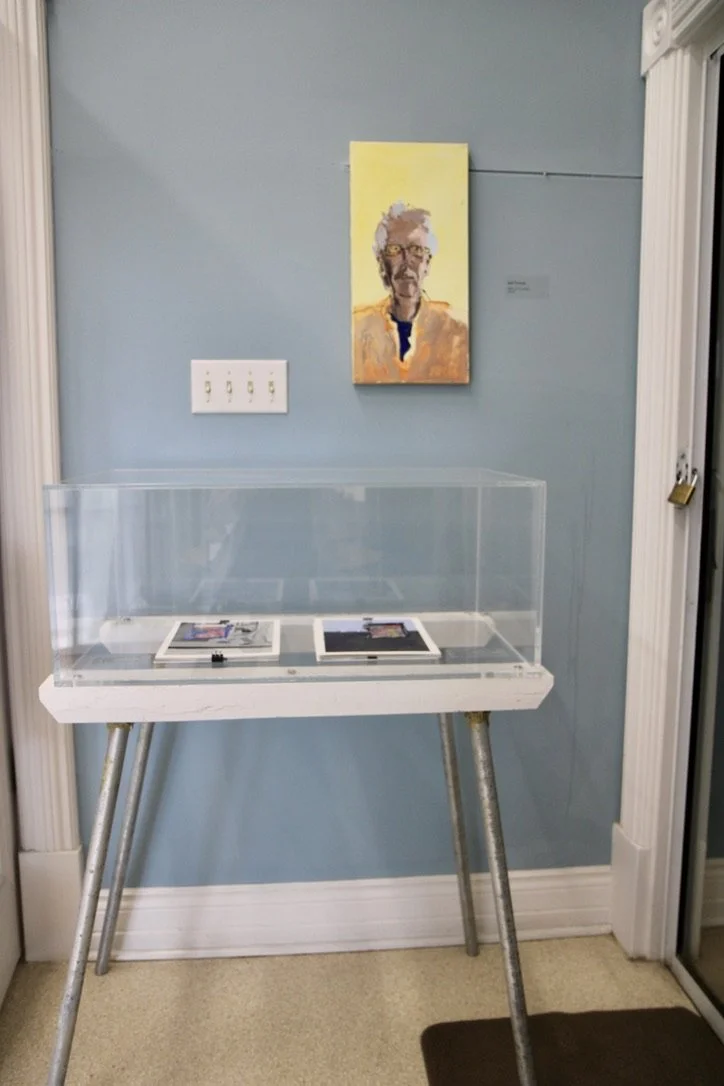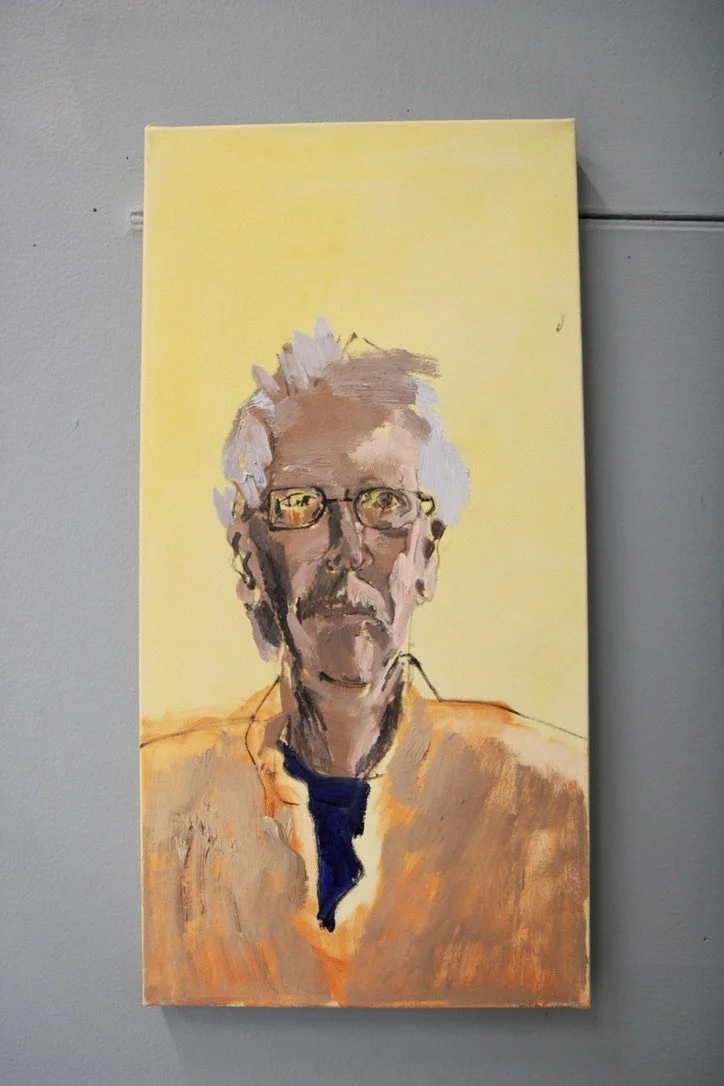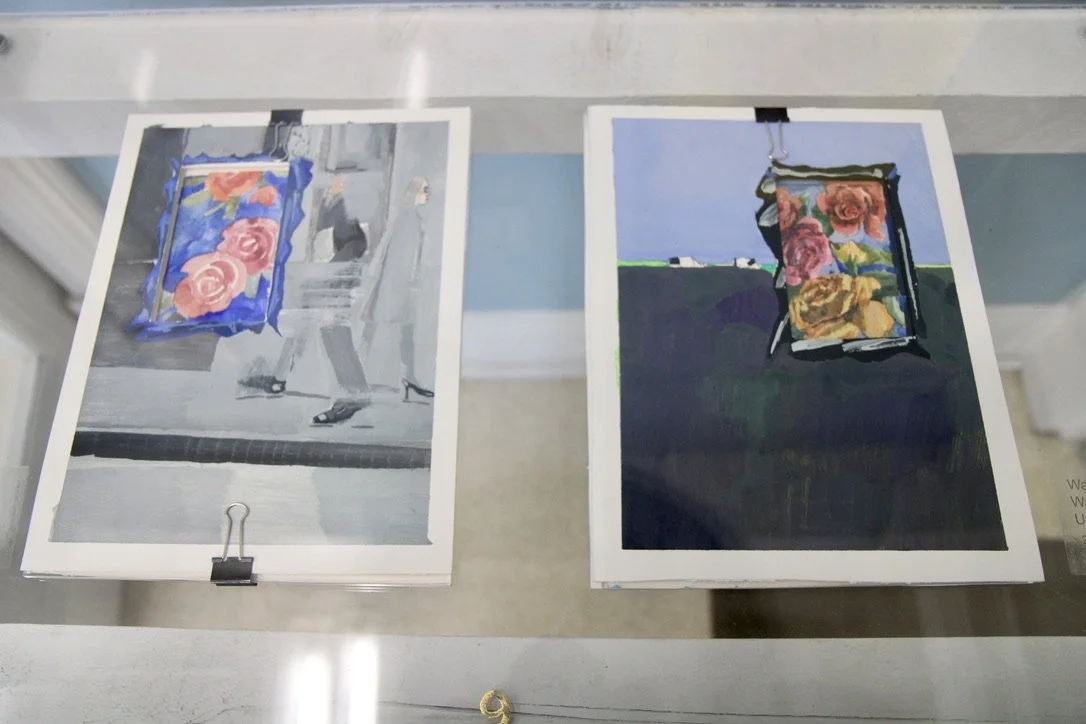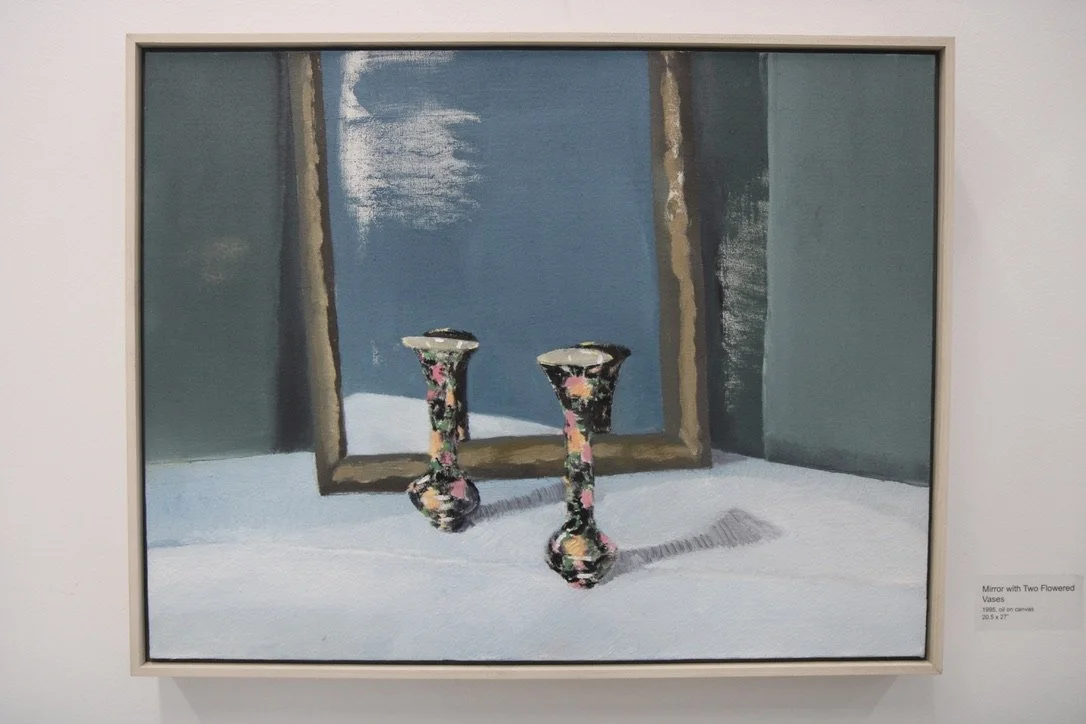Art and Politics
As the previous installations in this exhibition have demonstrated, George’s practice is based on close looking and thoughtful consideration. The artworks in this display are consistent with many of his other works: still life objects such as bottles, vessels and flowers are set amongst interiors or views to the outside.
However, time spent with the works shows that the imagery is somewhat jarring, moreso than on initial glance. For example, fluorescent colours in a still life allude to contamination from industrial sites in the North Saskatchewan River; beautiful florals are placed in battlefields amongst armies of soldiers.
The content of George’s work is intended to be a question, not an answer, in his exploration of the problems of the world. He thoughtfully arranges installations of meaningful objects in his studio, many of which find their way into his artworks. But the objects in his personal space do not exist in a vacuum. Words and images from the media seep in; local, regional, and global events become part of his artworks. Nuclear power plants or military aircraft, then, are just as “everyday” and domestic as a cup of tea or a bouquet from the garden. In the process of thinking and questioning, a new image is constructed from the interactions between familiar, beloved spaces with broader political contexts.
Triangle Series - 911 is a significant series in this display. It was completed in 2003, a few years following attacks on the World Trade Center towers in New York City. These watercolour paintings sit delicately on the paper, with embossed areas providing subtle depth. Each piece contains a glass bottle, chalice, and airplane, arranged so that the items form the points of a triangle. Yet there is a sense of uncertainty: the combination of an ominous, low-flying plane with the elegant yet comparatively fragile vessels creates a feeling of impending disaster. Artistically speaking, in a composition a triangle often provides balance and interest. In this series, the objects that form the triangle contradict the shape’s traditional stability.
Reality demands close interpretation. A function of the arts is to make us realize that we should be challenged, ask questions, raise uncertainties, and explore doubts. This premise is evident throughout George’s diverse practice, but is particularly strong in his works with both delicate imagery and terrible happenings: a stark contrast that expresses the vulnerability of humanity and nature.
George Glenn, "Ambivalence: Maybe," 2003, acrylic on canvas, 20 x 26"
George Glenn, "Triangle Series: 9/11," 2003, watercolour, gold leaf, and silver leaf on paper, 30 x 40"
George Glenn, "Triangle Series: 9/11," 2003, watercolour, gold leaf, and silver leaf on paper, 30 x 40"
George Glenn, "Triangle Series: 9/11," 2003, watercolour, gold leaf, and silver leaf on paper, 30 x 40"
George Glenn, "Triangle Series: 9/11," 2003, watercolour, gold leaf, and silver leaf on paper, 30 x 40"
George Glenn, "Ft. Carlton Hillside," 1990, acrylic on unstretched canvas, 42 x 42"
George Glenn, "The Return of Spring," 2000, plexiglass shelf with two etches plexiglass boxes, two books, burnt twigs, and an angel of death seed pod, shelf: 14 x 19.75," Box #1: 8 x 5 x 4," Box #2: 11 x 8 x 3"
George Glenn, "The Return of Spring," 2000, plexiglass shelf with two etches plexiglass boxes, two books, burnt twigs, and an angel of death seed pod, shelf: 14 x 19.75," Box #1: 8 x 5 x 4," Box #2: 11 x 8 x 3"
George Glenn, "The Return of Spring," 2000, plexiglass shelf with two etches plexiglass boxes, two books, burnt twigs, and an angel of death seed pod, shelf: 14 x 19.75," Box #1: 8 x 5 x 4," Box #2: 11 x 8 x 3"
George Glenn, "North Saskatchewan River: Fluorescent Yellow Green," spring 2009, oil on canvas, 30 x 24"
George Glenn, "Flowers of Hope," 2009, oil on canvas, 28 x 22"
George Glenn, "Operation Desert Storm: The First Gulf War," 200304, acrylic on canvas, 4 x 3.5"
George Glenn, "Time and Memory: Mosquito Halo," 1990, acrylic on paper with transparency sheet, 19.75 x 22.5"
George Glenn, "The Measure of Wealth Series," 2001, acrylic on paper, varied sizes
George Glenn, "Water Flooded the Theatre," 2009, acrylic and mixed media on MDF, 22 x 46"
George Glenn, "Some Made Plenty," 2009, acrylic and mixed media on MDF, 21 x 51"
George Glenn, "Self Portrait #21," 2002, oil on canvas, 20 x 10"
George Glenn, "War and Roses Series: Bay Street" and "War and Roses Series: Holsteins," 2003-04, gouache on paper with plexiglass, 9.75 x 8"
George Glenn, "Mirror with Two Flowered Vases," 1995, oil on canvas, 20.5 x 27"
